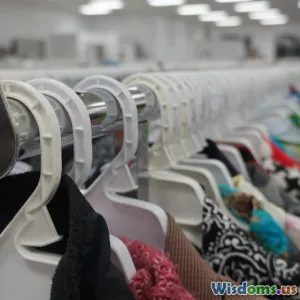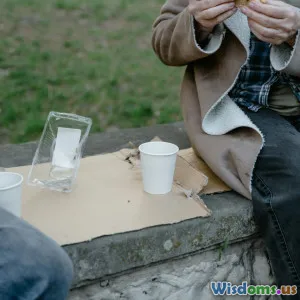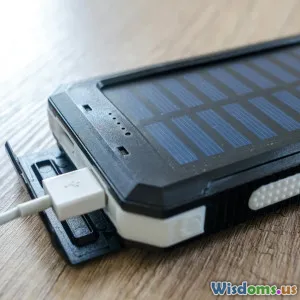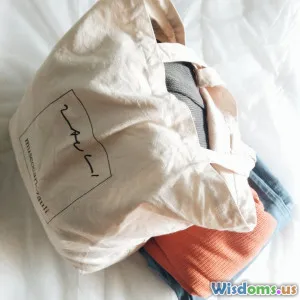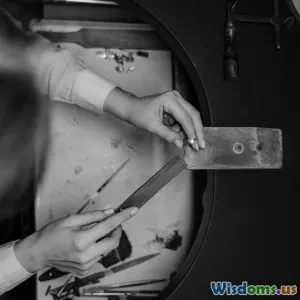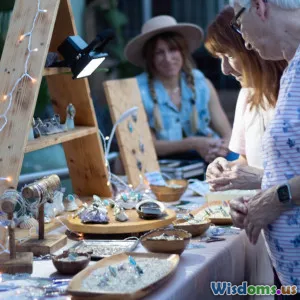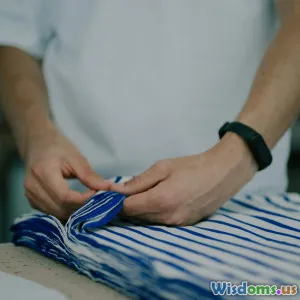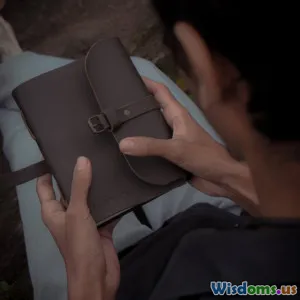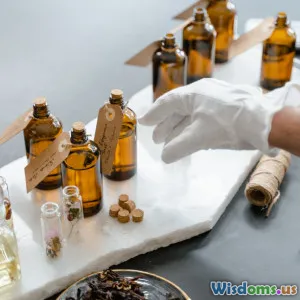
Stylish Upcycling Tips
6 min read Discover stylish upcycling tips to transform everyday items into chic, eco-friendly treasures with practical DIY ideas and creative flair. (0 Reviews)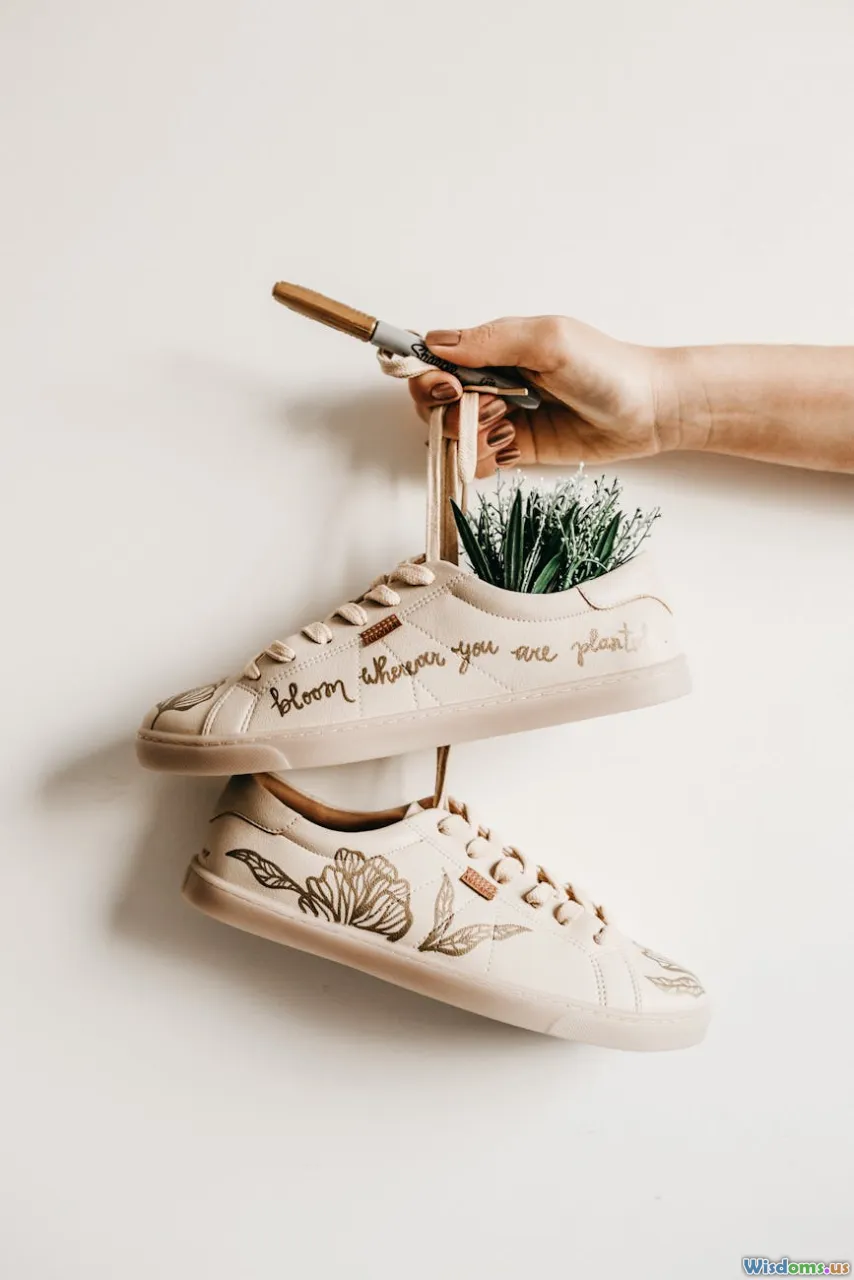
Stylish Upcycling Tips: Transform Trash into Trendy Treasures
Upcycling is no longer just a niche hobby for eco-conscious crafters—it's a burgeoning lifestyle and artistic movement that blends sustainability with style. Imagine turning your dusty thrift-store finds, outdated furniture, or even worn-out clothing into glamorous, functional masterpieces. Not only do you save money, but you also reduce environmental waste and cultivate a distinct, personalized aesthetic.
Why Choose Upcycling?
The average American throws away roughly 82 pounds of textile waste per year, contributing to overflowing landfills and excessive resource depletion. Upcycling transforms 'trash' into sought-after 'treasures,' giving these materials a second life and drastically reducing environmental impact.
Laura Clark, a renowned eco-artist, notes, "Upcycling isn't just craft; it’s a commentary on conservation and creativity merging to redefine consumer habits."
Stylish Upcycling Tips: Where to Begin
1. Discover Hidden Potential in Everyday Objects
Before discarding anything, ask: How can this be reimagined? For example, old wooden pallets can make industrial-chic coffee tables or garden seating. Vintage scarves sewn onto plain tote bags create bespoke fashion statements.
Example: Etsy sellers report a 150% increase in sales of upcycled decor items like pallet wood shelves and reworked mason jars, proving the market's hunger for innovative reuse.
2. Select Quality Base Materials
Durability is key. Opt for items made of solid wood, sturdy fabrics, or metals. These materials withstand transformation processes and aging gracefully.
Pro Tip: Visit local thrift stores or flea markets early—items in good condition bring better results and last longer.
3. Embrace Minimal Tools, Maximal Creativity
Upcycling doesn’t demand power tools or master craftsmanship. Sometimes paint, fabric glue, and a pair of scissors suffice.
- Use chalk paint to refresh furniture without sanding.
- Embellish glass jars with twine and lace for rustic storage.
- Fabric scraps can become patchwork pillows or trendy scrunchies.
Individuals on company forums praise such minimalist approaches for making upcycling accessible to beginners and saving money.
Innovative Upcycling Project Ideas
A. Fashion Reimagined
Transforming old clothes and accessories remains popular and impactful.
- Turn oversized men's shirts into fashionable dresses.
- Add lace trim or embroidery patches to revive denim jackets.
- Repurpose leather handbags by applying paint splatter techniques.
Celebrity stylists highlight that personalized upcycled pieces add uniqueness that fast fashion lacks.
B. Furniture with Flair
take outdated pieces in need of TLC and give them a second life with style.
- Repainting and stenciling an old dresser can create a vintage-modern hybrid.
- Upholstering chairs with bold patterned fabrics instantly elevates their look.
Studies show that well-executed furniture upcycling can increase an item’s resale value by up to 70%, making it economically savvy.
C. Home Décor & Functional Art
Everyday household items can morph into statement decor with simple twists.
- Convert wine corks into mosaic coasters or wall art.
- Glass bottles can become pendant lights by adding wiring.
- Repurpose old ladders into shelving units or plant stands.
Maker communities confirm that such DIY projects foster a personal connection with your living space and often become cherished focal points.
D. Garden & Outdoor Charm
Don’t overlook outdoor spaces.
- Use old tires as planters painted in vibrant hues.
- Create bird feeders from teacups and saucers.
- Upcycled wooden crates lend themselves perfectly to raised garden beds.
Environmental reports emphasize that gardens benefiting from upcycled elements contribute to biodiversity while promoting waste reduction.
Best Practices for Stylish Upcycling
- Plan before you start: Sketch designs or mood boards.
- Maintain functionality: Beauty is functional in upcycled pieces.
- Safety first: Always use gloves and proper ventilation when sanding or painting.
- Stay inspired: Platforms like Instagram (#UpcycledStyle) and Pinterest overflow with novel ideas.
Conclusion: Upcycling as a Stylish, Sustainable Lifestyle Choice
Upcycling marries sustainability with creativity, empowering individuals to reduce ecological footprints while cultivating individualized style statements. From modest DIY crafts to refurbished heirloom furniture, there is no limit to the transformative power of waste materials.
Each crafted piece tells a story, proves resourcefulness, and showcases environmental commitment. As fashion icon Vivienne Westwood famously said, "Buy less, choose well, make it last." Upcycling not only fulfills this ethos but helps rewrite consumer narratives globally—one inventive project at a time.
No matter your skill level, stylish upcycling is a rewarding endeavor that benefits your wallet, the planet, and your creative soul. Take that discarded item today, and watch it bloom into something spectacular and sustainable.
Happy upcycling!
Rate the Post
User Reviews
Popular Posts











